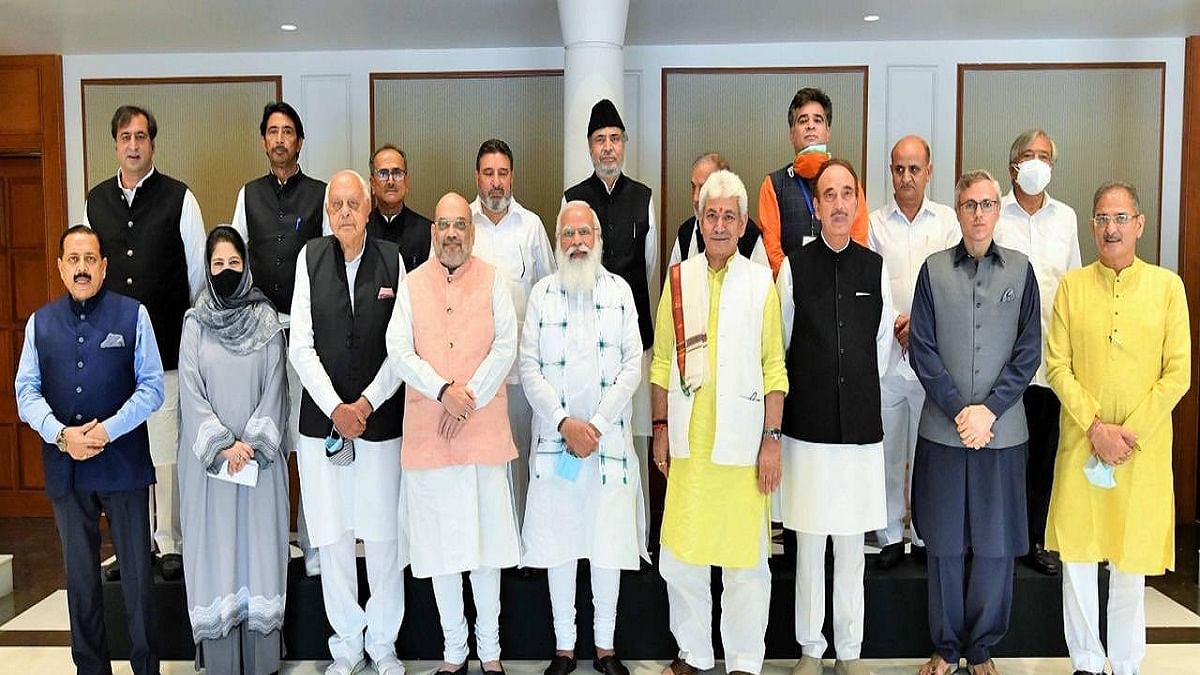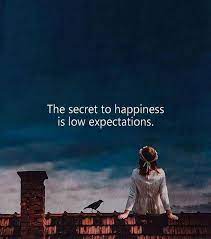Valley leadership would do well to ponder some questions, rather than seek answers and reassurances from the Centre.
By – Haseeb A Drabu
Even though convening the J&K All-Party Meet (APM) was a climbdown for the BJP and a compulsion of the Union government, it was conducted and concluded exactly the way they wanted it. It is a lesson in the realpolitik of how a tactical move — meeting leaders including former chief ministers and deputy chief ministers and prospective chief ministers — has been converted into a strategic initiative that will resonate much beyond the boundaries of the Union Territory and indeed in the country. Round one: PM Modi and HM Shah.
The Valley-based political leadership seemed to have come with more expectations from the media than from the meeting. Perhaps rightly so. This is evident from the noise that they made outside of the meeting hall which was not even heard inside, if it was whispered in there, that is.
In doing so, what could have been an occasion, if not an opportunity, to start the process of setting a relevant agenda for Kashmir was converted into an excuse to live in the past. In the absence of a proactive and collective political strategy what was put on display was a totally reactive and deeply fragmented political thinking. The end result being that having come down from the pre-1953 position to the pre-2019 position, they found themselves pleading for administrative and police cadre restoration.
The mainstream leadership of the Valley misread the APM as a goodwill gesture and treated it as an event. It was a statement underlying which were some honest admissions — President’s Rule, which cannot be a long-term solution, is not even a short-term option in Kashmir now. For the better part of two years, the central leadership is fully aware that the delivery on the ground has not been any better than in the past, resulting in changing horses mid-course.
Even though the word on the streets of Srinagar is that pandemic management has been better than most elected governments in other parts of the country, a peaceful and developmental environment in the Valley has yet not been enabled. It is not only very fragile, but it is also very taut. This despite the skill and strength with which the aftermath of abrogation was handled.
More importantly, regional parties with all their ideological and political warts are not dispensable. The new political outfits have not made any serious dent, let alone changed the narrative, which is what was expected of them. The fact is that the BJP, a party which has decisively changed the narrative on Kashmir in the rest of the country, has not been able to change the narrative about Delhi in Kashmir. This big admission is the subtext of the PM’s evocative phrase, as both the “dooris”, dil ki aur Dilli ki, have indeed grown, not just in the Valley but also in Jammu and among the Kashmiri Pandits.
Seen thus, the Valley’s political class should have used the meeting to identify the common areas of concern and agreement rather than delve on differences between the two sides which are all too well known to bear repetition in such a forum. At the end of the day, the Centre has got a tacit buy-in on the delimitation exercise from the political class of the Valley. In being co-opted, they have chosen to risk their political survival for electoral salvation in the face of new kids on the block who have the potential to queer their political pitch.
Given that in the Valley the news of the APM and its deliberations was greeted with a big yawn, the Valley leadership, bruised if not battered, would do well to go into a huddle and move from shrillness to substance by pondering over a few questions rather than seek answers and assurances from the Centre.
Why should any way forward have to be located in the past? Why should a solution for the present and the future always have to be status quo ante? It seems to have been forgotten that every political accord, agreement or settlement, be it in 1952 or 1975, has been, with the benefit of hindsight, seen as a compromise, if not a sell-out.
Also, all these have been the outcomes of a certain political context, and of a set of international and domestic compulsions at that point of time, none of which are relevant at present.
For instance, had the pre-1953 arrangement been a workable political model, it would not have collapsed under the weight of its own contradictions within 18 months of it being agreed upon. The chinks in the arrangement were revealed on May 14, 1954 when the first and most debilitating Constitutional Application Order was issued. The creativity of the constitutionalists has always been underestimated by politicians.
At inception, the legislative relationship was designed to prevent Indian laws from directly applying to J&K. Yet, over the last 70 years, even before the abrogation, all laws had been extended. And post 2019, all these have been now repealed and homogenised.
In view of this erosion and subsequent abrogation, is it better to seek a repeal, which has been sought for the better part of 70 years now, with no avail? Or is it more meaningful to propose a framework of democratic accommodation of local aspirations, as distinct from electoral appeasement of land and job reservation, which will give Kashmiris a chance to live as citizens and not feel like subjects? In evolving this, the emerging global reality and the extant domestic ideological consensus has not only to be comprehended but contended with.
If this is not done, it will not be long before the Valley-based political parties will be forced to repeat what the godfather of mainstream politics in Kashmir, Sheikh Abdullah, said about the period of 1953 to 1975 — “siyasi awaragardi” (political vagabondry). That is history. Let that not be repeated.





